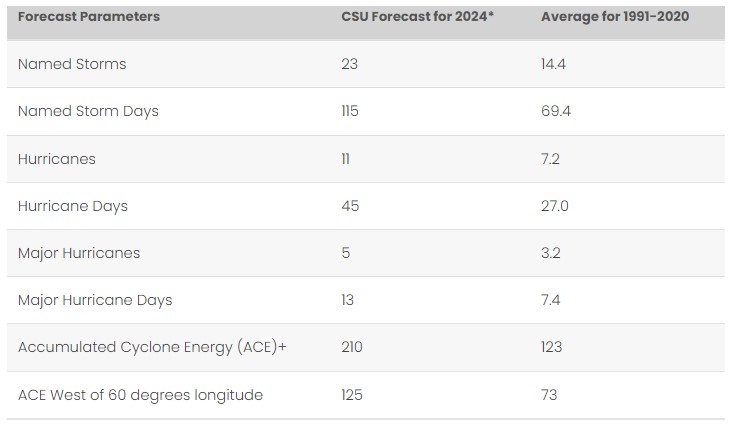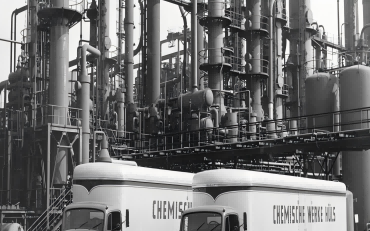‘Extremely active’ 2024 Atlantic hurricane season, could threaten US Gulf chem production

Source: Colorado State University (CSU)
A report late last week from researchers at CSU follows a report released on 27 March by US meteorology firm AccuWeather that also predicted an active hurricane season.
So far, the CSU team said it is seeing similar characteristics to hurricane seasons in 1998, 2010 and 2020.
The 2020 season saw 30 named storms, of which 13 became hurricanes and six of those were major storms.
- Tropical Storm Marco hit Louisiana on 24 August. Days later, Hurricane Laura made landfall as a powerful category 4 storm in Louisiana near the border of Texas.
- Then, Hurricane Sally made landfall on 16 September in Alabama as a category 2 storm, followed by Tropical Storm Beta which made landfall less than a week later in Texas.
Hurricane Delta followed a similar path as Hurricane Laura, making landfall on 9 October as a category 2 storm in Louisiana. Weeks later, Hurricane Zeta hit Cocodrie, Louisiana, as a category 2 storm.
Hurricane Laura knocked 16% of total US ethylene capacity and 11% of total US propylene capacity offline.
About 18% of polyethylene (PE) production was offline, and 26% of polypropylene (PP) production was offline.
Styrene butadiene rubber (SBR), a synthetic rubber used to make tires, had 46% of its US capacity offline.
The current El Nino is likely to transition to a La Nina by the peak of the season – from August to October.
Hurricane season begins on 1 June and runs through the end of November.
Hurricanes and tropical storms can disrupt the North American petrochemical industry, because oil and gas production are concentrated in the Gulf of Mexico.
Also, many of the nation’s refineries and petrochemical plants are along the US Gulf Coast in the states of Texas and Louisiana.


